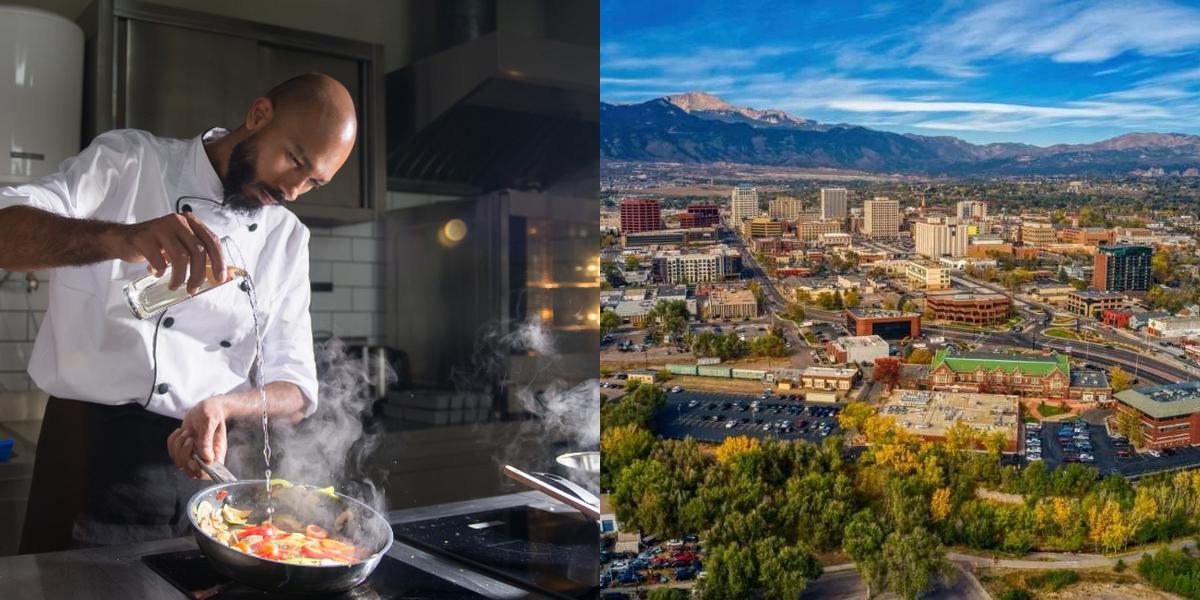How to Become a Chef in Colorado

Culinary arts is the art of preparing, cooking, and presenting food. Culinary artists, also known as chefs, are skilled professionals who create delicious and visually appealing dishes. They are responsible for planning menus, selecting ingredients, and managing kitchen operations.
How do I get a job as a Culinary Arts?
Once you have obtained your culinary arts certification, you may be wondering how to land a job in the field. Here are some steps you can take to increase your chances of getting a job as a culinary arts professional:
-
Build a strong resume: Your resume is your first impression on potential employers. Highlight your culinary arts education, certifications, and any relevant work experience. Include any specializations or areas of expertise, such as baking and pastry arts, international cuisine, or dietary restrictions. Also, mention any awards, honors, or competitions you have participated in.
-
Gain practical experience: Practical experience is highly valued in the culinary arts industry. Look for opportunities to gain experience, such as internships, externships, or apprenticeships. These experiences will allow you to work in professional kitchens, learn from experienced chefs, and develop your skills. Additionally, consider volunteering at local events or organizations to gain exposure and network with industry professionals.
-
Build a professional network: Networking is crucial in the culinary arts industry. Attend industry events, conferences, and trade shows to meet professionals in the field. Join culinary associations or organizations, such as the American Culinary Federation (ACF), to connect with other culinary arts professionals and stay updated with industry trends. Networking can lead to job opportunities and mentorship.
-
Create a portfolio: A culinary arts portfolio showcases your best work and demonstrates your skills and creativity. Include photos or descriptions of dishes you have prepared, any menu planning or recipe development you have done, and any other relevant projects or collaborations. A portfolio can be a powerful tool to showcase your talent to potential employers.
-
Apply for jobs: Once you have a strong resume, practical experience, and a robust network, start applying for jobs in the culinary arts industry. Look for job postings online, on culinary job boards, or on the websites of restaurants, hotels, or catering companies. Tailor your application to each job, highlighting the skills and experiences that are most relevant to the position.
-
Prepare for interviews: As you start getting interview requests, make sure to prepare for them. Research the company or establishment you are interviewing with, familiarize yourself with their menu or cuisine, and be prepared to discuss your culinary philosophy and experiences. Practice answering common interview questions and be ready to showcase your passion for culinary arts.
-
Be open to entry-level positions: Starting out in the culinary arts industry may require taking entry-level positions. Consider opportunities such as line cook, prep cook, or pastry assistant to gain experience and learn from seasoned professionals. These positions can serve as stepping stones to more advanced roles in the future.
-
Continue learning and growing: The culinary arts industry is constantly evolving, and it's important to stay updated with the latest trends, techniques, and ingredients. Take advantage of professional development opportunities, such as workshops, seminars, or online courses, to continue learning and improving your skills. This continuous growth will make you a valuable asset to any culinary arts establishment.
Career Paths and Opportunities after Becoming a Culinary Arts
After obtaining your culinary arts certification and gaining some experience in the field, you will have various career paths and opportunities to explore. Here are some potential career paths in the culinary arts industry:
-
Chef: Becoming a chef is a common career path for culinary arts professionals. As a chef, you can work in restaurants, hotels, resorts, or catering companies. Depending on your experience and expertise, you may start as a line cook or sous chef and work your way up to executive chef or head chef positions. Chefs are responsible for menu planning, recipe development, supervising kitchen staff, and ensuring the quality of food.
-
Pastry chef: If you have a passion for baking and desserts, a career as a pastry chef may be the right fit for you. Pastry chefs work in bakeries, patisseries, hotels, or restaurants, creating and preparing a variety of pastries, cakes, bread, and other sweet treats. Pastry chefs need strong baking and decorating skills, as well as an understanding of flavor combinations and presentation.
-
Caterer: Catering companies provide food and beverage services for events such as weddings, corporate functions, and parties. As a caterer, you would be responsible for planning menus, preparing food, and coordinating with clients and event organizers. This career path allows for creativity and flexibility, as you can create customized menus and work in different settings.
-
Food stylist: Food styling is a niche career path within the culinary arts industry. Food stylists work with photographers, magazines, advertising agencies, or film productions to create visually appealing food images for various media. This role involves arranging and presenting food in an aesthetically pleasing way, often using techniques and tricks to enhance the appearance of the food.
-
Culinary instructor: If you have a passion for teaching and sharing your culinary knowledge, becoming a culinary instructor may be a rewarding career path. Culinary instructors work in culinary schools, community colleges, or vocational schools, teaching aspiring chefs and culinary arts students. This role involves developing lesson plans, demonstrating cooking techniques, and assessing student progress.
-
Food writer or blogger: If you have excellent writing skills and a love for food, a career as a food writer or blogger may be an option for you. Food writers and bloggers create content related to food, recipes, restaurant reviews, or culinary trends. This career path allows for creativity and flexibility, as you can work independently or contribute to magazines, websites, or food publications.
-
Restaurant owner or entrepreneur: For those with an entrepreneurial spirit, opening your own restaurant or food business can be a fulfilling career path. This option allows you to showcase your culinary skills, create your own menu and concept, and provide a unique dining experience to customers. However, owning a restaurant or food business requires careful planning, financial investment, and management skills.
-
Research and development chef: Research and development chefs work in food manufacturing or food service companies, developing new recipes, products, or menu items. This role involves conducting research, experimenting with ingredients and flavors, and ensuring that the final product meets quality standards and customer expectations. Research and development chefs often collaborate with food scientists, nutritionists, and marketing teams.
These are just a few examples of the many career paths and opportunities available in the culinary arts industry. The field is diverse and offers options for creativity, entrepreneurship, and personal growth. By continuously honing your skills, staying updated with industry trends, and seizing opportunities, you can build a successful and fulfilling career in the culinary arts.
How Much does a Chef make?
The salary of a chef can vary depending on several factors, including experience, location, and the type of establishment they work in. On average, chefs in the United States earn a median annual salary of around $51,530, according to the Bureau of Labor Statistics. However, starting salaries for entry-level chefs can be lower, typically ranging from $25,000 to $35,000 per year.
It's important to note that these figures are just averages, and individual salaries can vary significantly. Experienced and well-known chefs who work in high-end restaurants or run their own establishments can earn six-figure salaries or even more.
How Much does a Chef make?
The salary of a chef can vary depending on several factors, including experience, location, and the type of establishment they work in. On average, chefs in the United States earn a median annual salary of around $51,530, according to the Bureau of Labor Statistics. However, starting salaries for entry-level chefs can be lower, typically ranging from $25,000 to $35,000 per year.
It's important to note that these figures are just averages, and individual salaries can vary significantly. Experienced and well-known chefs who work in high-end restaurants or run their own establishments can earn six-figure salaries or even more.
Final Thoughts
Obtaining a culinary arts certification is an important step towards pursuing a career in the culinary arts industry. It provides you with the necessary skills, knowledge, and credentials to excel in various roles, from chef to food writer. By following the steps outlined in this blog post, you can start your journey towards a rewarding and fulfilling career in the culinary arts.
If you're thinking of a new career path, Dreambound offers in-depth guides to understand various job choices:

Sunshine is a member of the School Growth team at Dreambound, where she assists students and schools with their billing and onboarding needs. She is a licensed mechanical engineer. Outside of work, she enjoys road trips with her family, discovering cozy cafes, and exploring her love for art.



